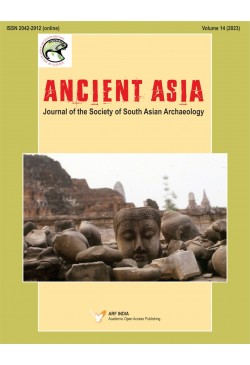
Ancient Asia
Frequency :Bi-Annual
ISSN :2042-5937
Peer Reviewed Journal
Three-Dimensional Reconstruction of Gangneung Mummy’s Heart and Liver Based on the Computed Tomography Images
Ensung Koh, Da Yeong Lee, Dongsoo Yoo, Myeung Ju Kim, Jong Ha Hong, Sang Joon Park, Jieun Kim, In Sun Lee and Dong Hoon Shin (2023). Three-Dimensional Reconstruction of Gangneung Mummy’s Heart and Liver based on the Computed Tomography Images. Ancient Asia, 14: 1, pp. 1-8. https://doi.org/10.47509/AA.2023.v14i01.01
Moribetta and Morikallu: Two Megalithic Burial Sites on the Edge of Western Ghats in Kodagu District, Karnataka
Chandan Kumar, D.M. & V. Shobha (2023). Moribetta and Morikallu: Two Megalithic Burial Sites on the Edge of Western Ghats in Kodagu District, Karnataka. Ancient Asia, 14: 1, pp. 9-25. https://doi.org/10.47509/AA.2023.v14i01.02
Ramnagar Inscription: Making of the Temple and the Queen
Dixit, A., & Redij, T. (2023). Ramnagar Inscription: Making of the Temple and the Queen. Ancient Asia, 14: 1, pp. 27-46. https://doi.org/10.47509/AA.2023.v14i01.03
Preliminary Results of an Archaeological Survey in Makhel Village and Surrounding Areas in Manipur, Northeast India
Singh, O.P. (2023). Preliminary Results of an Archaeological Survey in Makhel Village and Surrounding Areas in Manipur, Northeast India. Ancient Asia, 14: 1, pp. 47-61. https://doi.org/10.47509/AA.2023.v14i01.04
Essence of Megalithism among the Ethnic Communities from AssamMeghalaya Border Region
Bora, S.D. (2023). Essence of Megalithism among the Ethnic Communities from AssamMeghalaya Border Region. Ancient Asia, 14: 1, pp. 63-77. https://doi.org/10.47509/AA.2023.v14i01.05